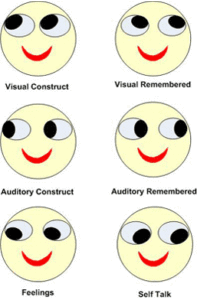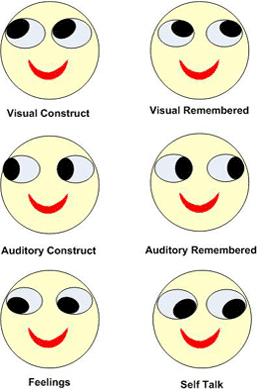Here’s a step in your body language education: how to interpret non-verbal clues to tell if someone is lying. On their own, each of these gestures could be a sign of stress or just a natural mannerism. One or two could occur by chance, but be wary if more than two of these behaviors appear suddenly and simultaneously.
Hand to face: Three of the most common and easily identified gestures associated with lying involve touching the face with the hands. To help you remember them, think of these signals as, “speak no evil, see no evil and hear no evil.” The “speak no evil” gesture occurs when someone touches or puts their hands in front of their mouth as though to filter or block their words. “See no evil” is when a liar rubs their eyes while speaking. “Hear no evil” happens when a person covers their ears or plugs an ear with a finger while they are speaking.
Micro gestures: Expressions or gestures that happen in less than a second are referred to as micro gestures. Many law enforcement agencies videotape interviews in order to play them back in slow motion and evaluate micro gestures in detail. You probably won’t have the opportunity to record meetings and play them back in slow-mo, but there are two gestures you can train yourself to observe in real-time to determine whether someone is lying. First, look for nose wrinkles as though the person you are speaking with smells something offensive. Second, watch for a slight downward curl of the corners of the mouth. Remember, micro gestures last less than a second, so you’ll have to watch closely.
Subdued body gestures: Look for less physical movement than usual: hands lying motionless on chair arms, heads locked in place, torso stationary. The exception to this is leg movement.
Legs: When people lie, or when they are very nervous, their legs tend to move around more than typical. If you think someone is lying, all extra leg motion is suspect, but pay particular attention to a “figure four.” This is when legs are crossed so that one leg is brought up to rest on the knee of the other leg. It is a very defensive position and is commonly made a moment after a person tells a lie.
Eye contact: Be aware of where a person looks; liar’s eyes often wander toward the left. Also, when people lie the whites of their eyes frequently become visible above and below the iris instead of just at the sides. Liars tend to avoid direct eye contact, or to quickly shift eyes. If they do look you in the eye, be wary of smiling or laughing as liars frequently cannot keep a straight face. (More about this here.)

Speech: Listen for a change in the pitch of the voice, either lowered or raised, and a change in the rate of speech. Also, be wary of an increased number of “ums” or “ahs.”
Angle: When lying, people are unlikely to aim their pelvis and the trunk of their body directly towards you, even if you are talking one-on-one. Similarly, be wary of someone who crosses their arms over their stomach or chest, as though protecting their body.
Mixed signals: When a person is telling the truth, her face, body, speech patterns and words should all match. But if a person is lying, there is frequently some kind of incongruity. For example, if you husband says your mother is charming, but his hands are clenched, you may want to avoid leaving them alone together. Watch the face and the body for mixed signals; good liars are able to smile, but the smile will look forced. Very good liars may smile naturally, but their bodies are likely to appear tight or closed.
Check your suspicion: When you notice an indicator, whether it is an alteration in body language or a mixed signal, ask questions about the same topic. If the lying signs are still present, or if they get worse, this helps confirm your suspicion. Next, ask for information on an unrelated topic. If the person visibly relaxes and the lying indicators disappear, there is good chance you’ve been lied to.
Verbal cues
Chances are they’re lying if:
They say, “Are you calling me a liar?”
They accuse you of lying or inaccurate memory.
They offer vague answers to direct questions or make you repeat questions.
The story shifts, even slightly, or becomes more detailed in each telling.
They repeat statements unnecessarily, even after the topic of conversation changes.
